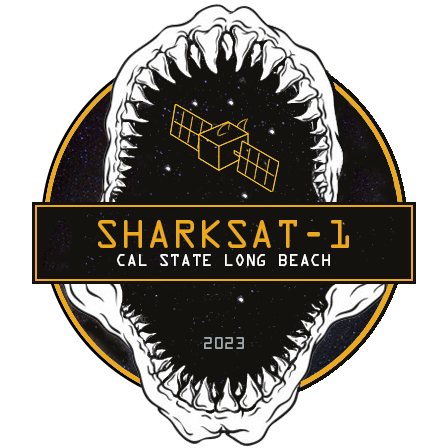SharkSat-1, created by the team at SharkSat, has been selected by NASA through its CubeSat Launch Initiative to launch its own CubeSat into space.
According to Nasa’s website, a CubeSat is a small spacecraft that orbits Earth. CubeSat can open up all kinds of tools such as solar panels, communications antennas and telescopes.
SharkSat is the first and only satellite-focused project group at Long Beach State. It is associated with the AIAA, also known as the American Institute of Aeronautics and Astronautics.
The SharkSat team submitted their CubeSat proposal in November and got approved by NASA in March.
“Since winning the proposal, everybody has been extremely excited, the energy in the room now is just at another level,” structures and thermals lead Aaron Kleidermacher said. “To see it come back to us with success makes every single one of us extremely proud.”
NASA’s Launch Initiative provides opportunities for CubeSats built by American educational institutions and nonprofit organizations. Per NASA’s website, the proposal must demonstrate a benefit to NASA by addressing aspects of education, science, exploration, technology development or NASA’s strategic goals.
The initiative selected 10 small research satellites across eight states to fly to space as part of NASA’s efforts to expand education and science opportunities. New entries for the launch proposal include five new universities, including CSULB.
“I think that’s the important thing here, just establishing a really prestigious engineering organization here for the advancement of the engineering industry as a whole, especially in our community,” telecommunications lead KeSean Johnson said. “We are all pretty passionate about engineering.”
SharkSat-1 seeks to monitor LED-induced blue light pollution across Earth. As mentioned on NASA’s website, LED lights are popular due to their cost efficiency, but their impacts are currently being studied by climate and health researchers.
The SharkSat team hopes to collect data that would create a database for experts to create light pollution maps.
“It takes a lot of work,” project lead Jaime Ormeno said. “You have to plan the entire project scope and you have to figure out your mission, how you’re gonna complete it and continue that to go with the design to later test and hopefully launch.”
NASA’s CubeSat Launch Initiative is one of many ways NASA is attracting and retaining students in STEM disciplines. The initiative promotes and develops innovative technology partnerships among NASA.
Since its introduction, the CubeSat Launch Initiative has launched over 150 CubeSats on more than 40 ELAN (Educational Launch of Nanosatellites) missions. NASA has selected over 200 CubeSat missions from more than 100 unique organizations representing 42 states.
“We started looking back at past winners and we realized that there’s a lot of universities in Southern California that have established organizations,” Johnson said.
“Ultimately, our success is really driven by the team,” Kleidermacher said. “It just makes us incredibly proud and incredibly grateful.”
NASA’s CubeSat Launch Initiative selected missions that are currently planned to launch from 2025-28.




